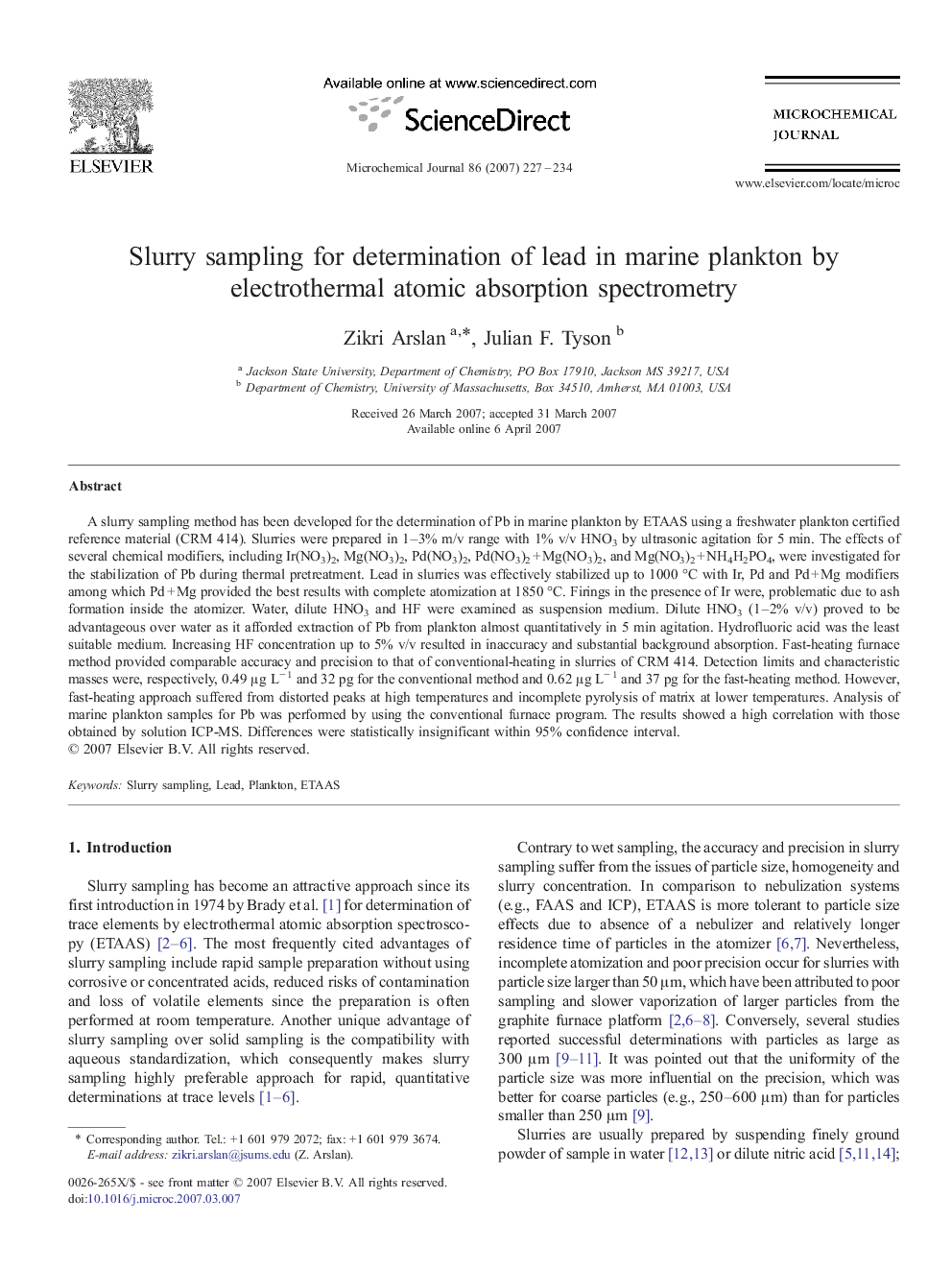| Article ID | Journal | Published Year | Pages | File Type |
|---|---|---|---|---|
| 1228366 | Microchemical Journal | 2007 | 8 Pages |
Abstract
A slurry sampling method has been developed for the determination of Pb in marine plankton by ETAAS using a freshwater plankton certified reference material (CRM 414). Slurries were prepared in 1-3% m/v range with 1% v/v HNO3 by ultrasonic agitation for 5 min. The effects of several chemical modifiers, including Ir(NO3)2, Mg(NO3)2, Pd(NO3)2, Pd(NO3)2 + Mg(NO3)2, and Mg(NO3)2 + NH4H2PO4, were investigated for the stabilization of Pb during thermal pretreatment. Lead in slurries was effectively stabilized up to 1000 °C with Ir, Pd and Pd + Mg modifiers among which Pd + Mg provided the best results with complete atomization at 1850 °C. Firings in the presence of Ir were, problematic due to ash formation inside the atomizer. Water, dilute HNO3 and HF were examined as suspension medium. Dilute HNO3 (1-2% v/v) proved to be advantageous over water as it afforded extraction of Pb from plankton almost quantitatively in 5 min agitation. Hydrofluoric acid was the least suitable medium. Increasing HF concentration up to 5% v/v resulted in inaccuracy and substantial background absorption. Fast-heating furnace method provided comparable accuracy and precision to that of conventional-heating in slurries of CRM 414. Detection limits and characteristic masses were, respectively, 0.49 μg Lâ 1 and 32 pg for the conventional method and 0.62 μg Lâ 1 and 37 pg for the fast-heating method. However, fast-heating approach suffered from distorted peaks at high temperatures and incomplete pyrolysis of matrix at lower temperatures. Analysis of marine plankton samples for Pb was performed by using the conventional furnace program. The results showed a high correlation with those obtained by solution ICP-MS. Differences were statistically insignificant within 95% confidence interval.
Related Topics
Physical Sciences and Engineering
Chemistry
Analytical Chemistry
Authors
Zikri Arslan, Julian F. Tyson,
